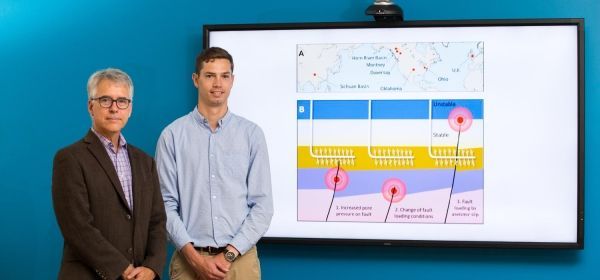Moderate earthquakes triggered by oilfield hydraulic fracturing operations to extract hydrocarbons are rare.
Such earthquakes are called “felt events” because they may be large enough to be felt in nearby communities, including a magnitude 4.2 earthquake earlier this year near Red Deer, Alta., and a 4.5 quake last year near Fort St. John, B.C. This has led to heightened public concern.
Scientists seeking to understand the physical mechanisms of these “induced” earthquakes have puzzled over discrepancies between laboratory measurements — which indicate such events shouldn’t happen in the type of rock that is undergoing stimulation — and field observations of the earthquakes.
Now, a new study led by University of Calgary seismologists appears to have solved the puzzle. Their new model shows that injection of fracturing fluids can lead to a slow slip on a fault. Over time, this puts enough strain on another section of the fault to cause it to slip suddenly — producing an earthquake.
Continue reading at University of Calgary.
Image via University of Calgary.


